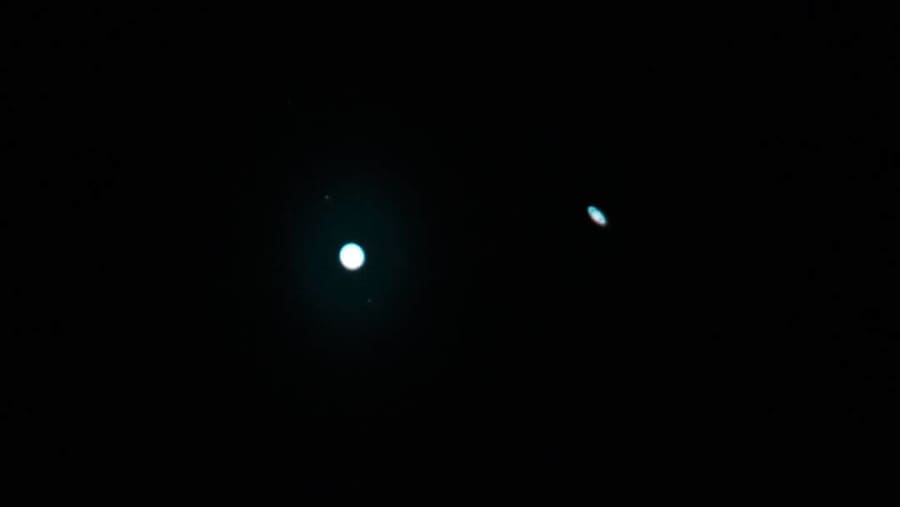SAN ANTONIO – The stars at night are big and bright (clap, clap, clap, clap) deep in the heart of Texas.
There are many celestial events taking place this fall that will be visible to Texas residents, including a partial lunar eclipse in November.
Recommended Videos
San Antonio-area resident and avid sky enthusiast Oscar Carrero, who served as a weather forecaster for the Air Force in the mid-90s, told KSAT that “a majority of folks think they need expensive and special equipment to enjoy the night sky. In most cases, a few rules of thumb and a dark sky are more than enough to see many wonderful objects in the Texas night sky.”
So what’s going on and when should you look up? We’re breaking it down for you below. (But the sky is cool, so feel free to look up every night.)
Moon:
Nov. 19 - Beaver Moon
Dec. 18 - Cold Moon
Wondering why full moons have names? Humans have used the moon as a way to keep track of the passing of the year for millennia. According to National Geographic, ancient cultures would give each full moon a different name based on the behavior of the plants, animals or weather during that month.
Speaking of the full moon, on Nov. 19 there will be a partial lunar eclipse of the Beaver Moon. TimeAndDate.com states that the partial eclipse will start around midnight and end around 6 a.m.
Carrero will be live streaming the eclipse on YouTube.
International Space Station:
The International Space Station (or ISS) is actually visible quite often since it orbits the Earth 16 times every 24 hours, according to NASA.
Check out the next space station flyover times below or at Spot the Station.
Meteor showers:
The Old Farmer’s Almanac has a list of meteor showers and the best viewing times, including how many meteors you can expect to see an hour if the sky is dark and you’re in a mostly rural area.
- Nov. 11-12 - 3 per hour for North Taurid shower
- Nov. 16-17 - 10 per hour for Leonid shower
- Nov. 25-27 - 5 an hour for Andromedid shower
- Dec. 13-14 - 75 an hour for Geminid shower
- Dec. 21-22 - 5 an hour for Ursid shower
EarthSky.org also shows a meteor shower called the South Taurid shower that will be visible in the late night from Nov. 4-5.
There are smartphone apps and websites that can help you navigate the night sky. Carrero suggests Sky & Telescope for getting some basic tips on stargazing.
Planets:
Space.com has a list of when you might get a chance to see the planets with a naked eye.
- Mercury appears in the western sky as a bright star in the mornings from Oct. 18 to Nov. 1.
- Venus appears in the western sky at dusk from late May through Dec. 31. It shines brightly with a steady, silvery light.
- Mars is visible in the morning from Nov. 24 through Dec. 31 and has a yellow-orange hue.
- Jupiter has a silver-white luster and appears in the evenings from mid-August through Dec. 31.
- Saturn is visible in the evenings from early August through Dec. 31 but unfortunately, the rings are only visible with a telescope.
Carrero was able to capture planets on his equipment in Dec. 2020. He captured both Jupiter and Saturn in the photo below. He frequently shares his snaps on the KSAT Connect App under his username SkyWatcher.

Uranus is generally hard to spot unless you have good eyesight and a very clear dark sky. Neptune requires a telescope or good binoculars to see it.
Stargazing Tips:
Carrero said one of his favorite apps for all things sky-related is Stellarium, which can help you get a better understanding of the sky.
The best thing for stargazing, however, is a dark sky. In other words, avoid so-called light pollution.
“The closer you are to the lights of a city, the harder it is to view skies at night,” said Carrero. “Make sure you plan for the weather. No one likes to view the night sky when there are clouds overhead.” The KSAT meteorologists can help with that.
Give your eyes time to adjust to the darkness too, suggests Carrero.
“It takes about 30 to 45 minutes for human eyes to adjust to the darkness. Many stellar objects cannot be seen until your eyes have had a chance to adjust,” he said. “It only takes one bright smartphone seconds to ruin your night vision, so keep your brightly lit electronic devices out of sight for the night.”
Light pollution is actually a problem for many parts of the world, including the U.S.
Texas has four cities that have been designated as Dark Sky Communities by the International Dark-Sky Association - Fredericksburg, Dripping Springs, Wimberley Valley and Horseshoe Bay. Currently, there are only 33 certified IDA International Dark Sky Communities in the world.
Also important is the timing of the celestial event.
“It’s a crucial part of stargazing, especially when it comes to meteor showers. If a full moon is out during a meteor shower, then the number of shooting stars you see will be significantly less,” said Carrero.
Related:
Fredericksburg receives designation as an International Dark Sky Community

